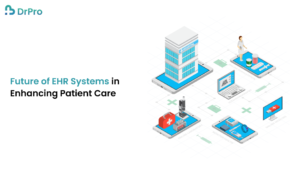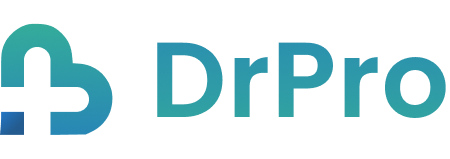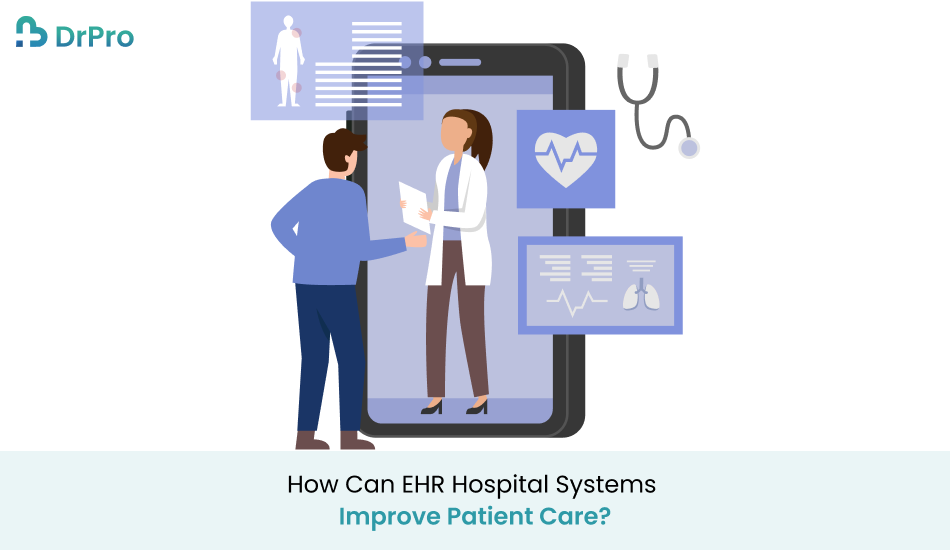Quick Summary
An integrated EHR system is central to optimizing hospital function and improving patient care by ensuring providers have quick and complete access to patients’ data. Optimally implemented EHRs assist in the flow of information, care management and coordination, increased safety precautions, and patient involvement. This article focuses on the facets of EHR systems that improve patient care, discusses the issues peculiar to healthcare organizations in EHR implementation, and considers development directions in patient-oriented medicine.
Introduction
The healthcare area is experiencing growth, and EHR at its center is a major part of the change. EHR systems have greatly transformed how hospitals deal with, generate, store, and retrieve patient information contrary to the conventional paper-based record keeping. Due to the integration and availability of current patient data to healthcare providers, EHR systems contribute to the development of a coordinated approach to patient care. This results in improving decision, timely interventions, and, therefore, better health.
Benefits of EHR Systems in Improving Patient Care

1. Streamlined Access to Patient Information
With EHR systems, the quality of patient care is boosted because a healthcare provider can instantly retrieve complete and current records for each patient. In the past, many pieces of information generated and stored about patients were fragmented across departments or on paper, and thus could not provide the big picture of patient profile. Of course, a centralized EHR system does not have this issue because here all patient information is gathered together – from medical history, prescribed medications, and dosage frequencies to lab results and treatment plans. Usually, the use of EHR leads to better decisions being made in a reasonable time, which is very important in general patient care.
2. Enhanced Care Coordination Across Departments and Facilities
Such a notion as patient care is closely connected with several departments and specialists in the case of a hospital. These teams include the primary care team and the specialist teams, and EHR allows all healthcare providers to work on the same information with the patient in real time. This is especially so where patients require care from specialist doctors, nurses, and supporting employees to have cohesion. Due to improved communication and coordination, EHRs reduce the potential for pitfalls and help in making certain that treatments indicated are not duplicated inadvertently by several caregivers. It enhances efficiency, as all the efforts being made are harmonious and contribute consistently to resulting care.
3. Reduction of Medication Errors and Improved Safety
Medication errors are, without doubt, some of the biggest dangers to patient safety in hospitals, and are also unfortunately very prevalent. They mitigate this by giving the EHR systems check and alert systems which aid healthcare providers in avoiding medication-related misunderstandings. Such systems may alert a clinician to possible drug-drug interactions, allergies, and even wrong doses, making prescription and medication administration safer. Through properly recorded medication documentation EHRs increase the patient confidence in the healthcare process with overall improvement of its result.
4. Empowering Patient Engagement and Self-Care
Continuity of care is key to good health outcomes and EHRs enable patients to take more responsibility for their care journey. Thus, patients built-in applications enable patients to record their information, review their test results, and engage in planned treatment at any time. Due to this transparency patients can follow their care plan, ask appropriate questions, and focus on early disease detection. Additionally, it allows them to use secure messaging as a method of communicating with their healthcare providers which creates a patient-centred culture that allows patients to be empowered and heard.
5. Patient Portals and Accessibility
Sharing of health information is one of the key concepts of patient-centered care delivery and EHR patient portals enable it. These patient portals offer the patients a way through which they can review their data, from lab findings to immunization records, amongst others, without having to be physically present at the hospital. This is of most help to patients who have mobility limitations or those from a wrong area, as it allows them to interact with their doctors through the device from any location. The features of EHR systems mean patients can continue their care from home, and they stay active participants in the management of their conditions.
6. Operational Efficiencies in Hospitals
EHR systems reduce several hospital operations, including avoidable use of time in administrative tasks and procedures. There are clerical savings from uses, for example, scheduling appointments, billing, and documentation by the adoption of EHRs. This efficiency in operations allows healthcare professionals to use a considerable amount of time with the actual patients, and this serves to enhance the satisfaction rate of the patients as well as their qualified health status. Therefore, the application of this technology may enable hospitals to provide better services to patients at the same time, lessen the burden on the employees.
7. Reduced Administrative Burden
Much time is spent doing administrative tasks to reduce patient care delivery despite being in healthcare institutions. EHR systems help to decrease this load by progressing and making the process of data entry easier, reducing paper documentation, and providing fast access to the necessary data. Since EHRs automate the processes of creating documents, healthcare providers get more time on their side to dedicate to their patients. Of equal significance is the decreased administrative burden that is of direct benefit to the patient through increased throughput and a better quality of care.
8. Cost Savings and ROI in the Long Term
It is a fact that adoption of EHR systems involves a capital investment at the early stages but on the flip side; the benefits outweigh the costs over time. By implementing EHR systems, organizations can decrease paper work, avoid repeat testing, and gain control of resources similarly they can save cost. Those include better record-keeping accuracy and medication information, both of which limit medical mistakes and are costly for the healthcare system. The key advantages of these efficiencies are that, in the long run, the ROI in health care organizations is rather high because the facilities save a big amount of money on operating costs and become financially more stable.
9. Data-Driven Insights for Population Health Management
EHR systems contain a tremendous amount of data; this information can be useful in managing the health outcomes of populations on whom healthcare providers may focus. Via the EHRs, some beneficial frameworks can be derived within the path of chronic illness, preventive care, and evidence-based care. Through analyzing aggregated data the application will help the hospital to identify risk groups, apply prevention measures, and contribute to the improvement of the population’s health. It means that it gives the healthcare system a chance to switch from the disease-centered model to patient patient-centered model.
Tracking Chronic Conditions and Outcomes
EHR systems are used in chronic disease management, such as diabetes, hypertension, and asthma. Thus, getting the patients’ status of these conditions in the future, the efficacy of the applied treatments and revisions of the therapy can be assessed. This capability enables custom, sustainable care for people with chronic diseases, thus enabling hospitals to concentrate on enhancing patients’ quality of life and health status. Furthermore, outcomes are useful in making changes as per the feedback received from Electronic health records since an assessment of the successful interventions is made regarding patient care.
Population-Level Health Monitoring
EHR systems also can facilitate aggregate-level analysis of patterns of health across populations, and the conclusions derived can help optimize public health or certain aspects of hospital operations. Hospitals use rough data to condense sets of organized data or data about diseases or treatments, thereby using them in the discovery of occurrences like disease frequency or treatment efficacy by the demographic. It directs the directions of health systems, health resources management, appropriate community health interventions for special issues, and the improvement of the overall health of the people.
Challenges and Considerations in Implementing EHR Systems
Privacy and Data Security
Disclosure of information is of great concern in the healthcare facility since EHRs contain very sensitive patient data. The data collected by hospitals is infamous for its security breaches which means that the hospital cannot compromise HIPAA regulations. To counter these worries, EHR providers use better encryption, and secure storage, and only allow proper authorization to have access. Consequently, there is a need for programmatic security audits and continuous monitoring to sustain patients’ confidence and conform to the privatized laws.
Interoperability Issues
This paper notes that for an EHR system to be optimal, it has to be interoperable with other systems deployed within and out of the hospital. A common network is needed to decentralize data to various healthcare facilities and this can only be made possible with interoperability. At the same time, achieving interoperability can be quite problematic due to many difficult aspects, one of which is the integration with systems that do not support data sharing. These steps are important to overcome the existing hurdles to develop an interconnected care system through optimal sharing of patient data for continuity in care.
Addressing User Adoption Barriers
Implementing the EHR system is never easy, especially for healthcare staff that have practiced traditional methods of work. However, the time it takes to complete training and the need for an ongoing technical assistant is crucial to the success of this endeavor. The acceptance of the new system is promoted by methods such as training the users and their feedback, being a comprehensive training program.
Future of EHR Systems in Enhancing Patient Care

Predictive Insights with Artificial Intelligence (AI)
The future progress of EHR systems is the more complex AI tools that can analyze the data collected on the patient to produce conclusions on what may happen in the future. AI analysis makes it easier to find out patients at risk, predict the development of diseases, and recommend protective actions so that healthcare systems can act in advance. These predictive findings not only decrease the number of trips to the hospital but also result in better patient health since the hospital and other forms of care can devote more time to preventing diseases.
Enhanced Data Sharing Across Networks
Due to the interconnected nature of growing healthcare networks, the feature of information exchange between different providers is crucial. EHR systems are growing features that will allow physicians and other caregivers to share patient information with other healthcare facilities without compromising the patient’s privacy rights. The possibility of sharing data enhances the integrated approach of care and continuity particularly among patients who have multiple disorders and thus need care from several carers.
Personalized and Precision Medicine
EHR systems are important in the provision of personalized care since they allow healthcare workers to compare the patient’s data to come up with the patient’s unique treatment plan. This makes it possible for the providers to invite the genes of the individuals, the lifestyle that the individuals lead as well as the medical history to form the physical treatment plans. Therefore, patients get appropriate care to suit their situations, and this increases satisfaction and better health.
Remote Monitoring and Telehealth Integration
When telehealth and remote monitoring are absorbed into EHR systems, the former will revolutionize healthcare delivery. Monitoring gives the healthcare givers a way by which they can monitor the health status of patients who are hard to reach or those who have chronic illnesses. Since telehealth visits may now happen and continuous monitoring is offered, EHR systems increase the capacity for care and delivery of prompt support no matter the patient’s location.
Conclusion
With the use of DrPro Electronic Medical Records software, one can observe a new type of concept in modern healthcare systems which brings every hospital the needed tools to improve the results for the patient. Through features such as improving patient information accessibility and the sharing of the same, strengthening care coordination, and providing analytical tools, DrPro assists hospitals in adding value and extending the kind of quality healthcare services by achieving more efficiency and safety in the delivery of services.
DrPro continues to develop new services and features including the utilization of artificial intelligence in giving predictive analysis and also telemedicine, and health care of the future is bright as patient satisfaction and better health care delivery are in the offing.
The collaboration between ProjectTree and DrPro ensures a comprehensive approach to managing projects and healthcare systems, optimizing both processes
FAQs
Q1. How do EHR systems improve patient care?
EHR systems streamline access to comprehensive patient data, enhancing decision-making and care coordination, which leads to improved patient outcomes and safety.
Q2. What role do EHRs play in preventing medication errors?
EHRs provide automated alerts for potential drug interactions, allergies, and dosage errors, significantly reducing medication-related risks.
Q3. How do EHR systems support patient engagement?
Through patient portals, EHRs enable individuals to access their health records, view test results, and communicate with healthcare providers, encouraging proactive self-care.
Q4. What operational efficiencies do EHRs offer hospitals?
EHRs automate routine tasks like documentation and scheduling, reducing administrative work and allowing healthcare staff to focus more on patient care.
Q5. What are the challenges of implementing EHR systems?
Hospitals may face challenges with data security, system interoperability, and user adoption. Addressing these requires robust security, seamless integration, and thorough staff training.


